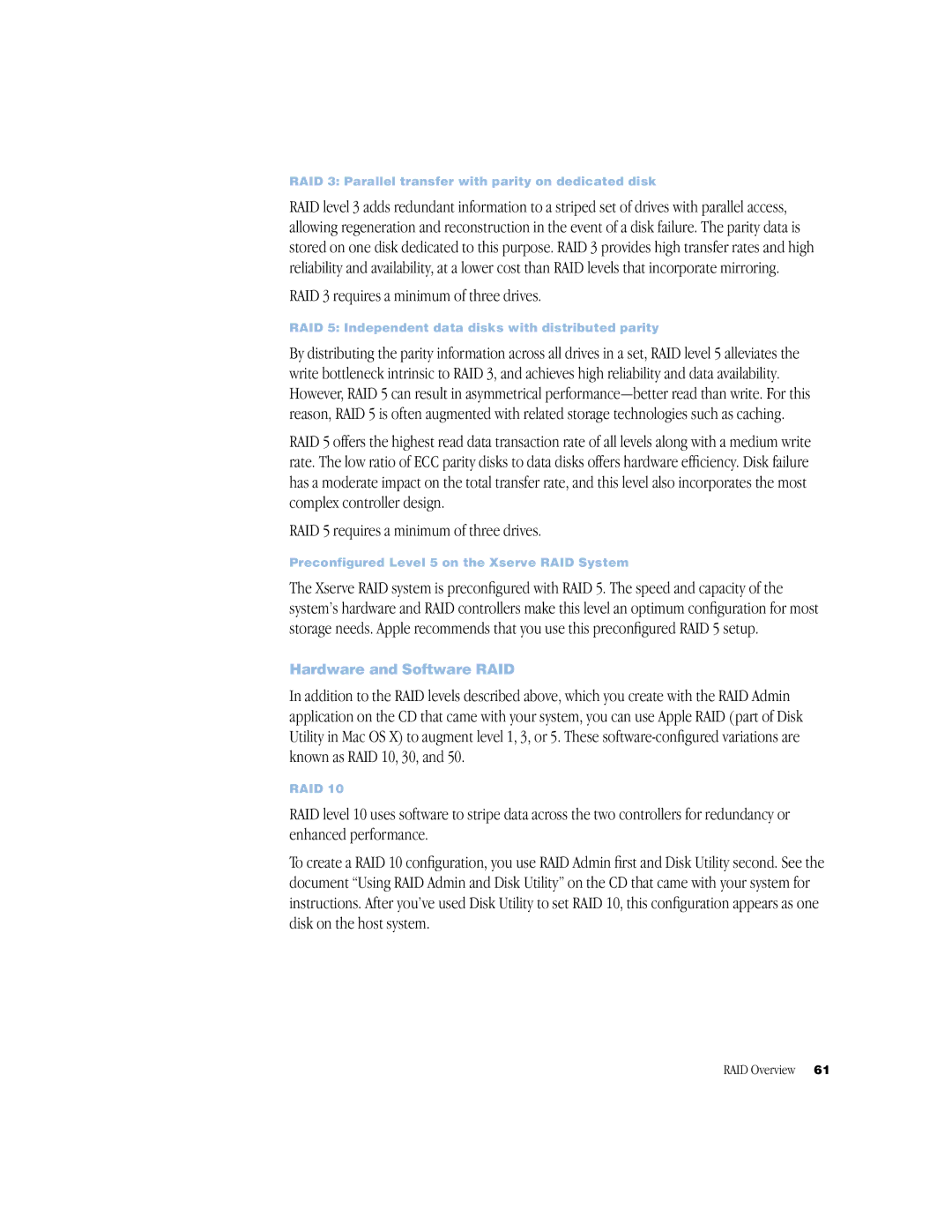RAID 3: Parallel transfer with parity on dedicated disk
RAID level 3 adds redundant information to a striped set of drives with parallel access, allowing regeneration and reconstruction in the event of a disk failure. The parity data is stored on one disk dedicated to this purpose. RAID 3 provides high transfer rates and high reliability and availability, at a lower cost than RAID levels that incorporate mirroring.
RAID 3 requires a minimum of three drives.
RAID 5: Independent data disks with distributed parity
By distributing the parity information across all drives in a set, RAID level 5 alleviates the write bottleneck intrinsic to RAID 3, and achieves high reliability and data availability. However, RAID 5 can result in asymmetrical
RAID 5 offers the highest read data transaction rate of all levels along with a medium write rate. The low ratio of ECC parity disks to data disks offers hardware efficiency. Disk failure has a moderate impact on the total transfer rate, and this level also incorporates the most complex controller design.
RAID 5 requires a minimum of three drives.
Preconfigured Level 5 on the Xserve RAID System
The Xserve RAID system is preconfigured with RAID 5. The speed and capacity of the system’s hardware and RAID controllers make this level an optimum configuration for most storage needs. Apple recommends that you use this preconfigured RAID 5 setup.
Hardware and Software RAID
In addition to the RAID levels described above, which you create with the RAID Admin application on the CD that came with your system, you can use Apple RAID (part of Disk Utility in Mac OS X) to augment level 1, 3, or 5. These
RAID 10
RAID level 10 uses software to stripe data across the two controllers for redundancy or enhanced performance.
To create a RAID 10 configuration, you use RAID Admin first and Disk Utility second. See the document “Using RAID Admin and Disk Utility” on the CD that came with your system for instructions. After you’ve used Disk Utility to set RAID 10, this configuration appears as one disk on the host system.
RAID Overview 61
